A vegetal magical mystery tour of a Brazilian back-yard
So I’m here in Brazil studying wild food plants, and it really opens your eyes to the potential of everyday spaces. So take for example my back yard, which until recently was used to keep chickens and is also used by the land lady to store old glass bottles from her restaurant. On the surface, it might look like a bit of a weedy mess. But let me take you on a mystical magical journey of discovery of its deepest darkest vegetal recesses! (well, some of the more obvious species…I could be here all day writing otherwise!).

João-Ricardo: 'Natureba' extraordinaire
Let me introduce João-Ricardo, he’s a friend and takes clean eating to another level. He’ll only eat something if he knows where it comes from and knows it to be clean – not so satisfying to cook for, on the other hand, just cook him a big pot of manioc or give him a bunch of bananas and he is truly happy as Larry (it's quite sweet). He’s picking a papaya for breakfast and is also happy to have just found bertalha-coração (Anredera cordifolia) in the backyard.
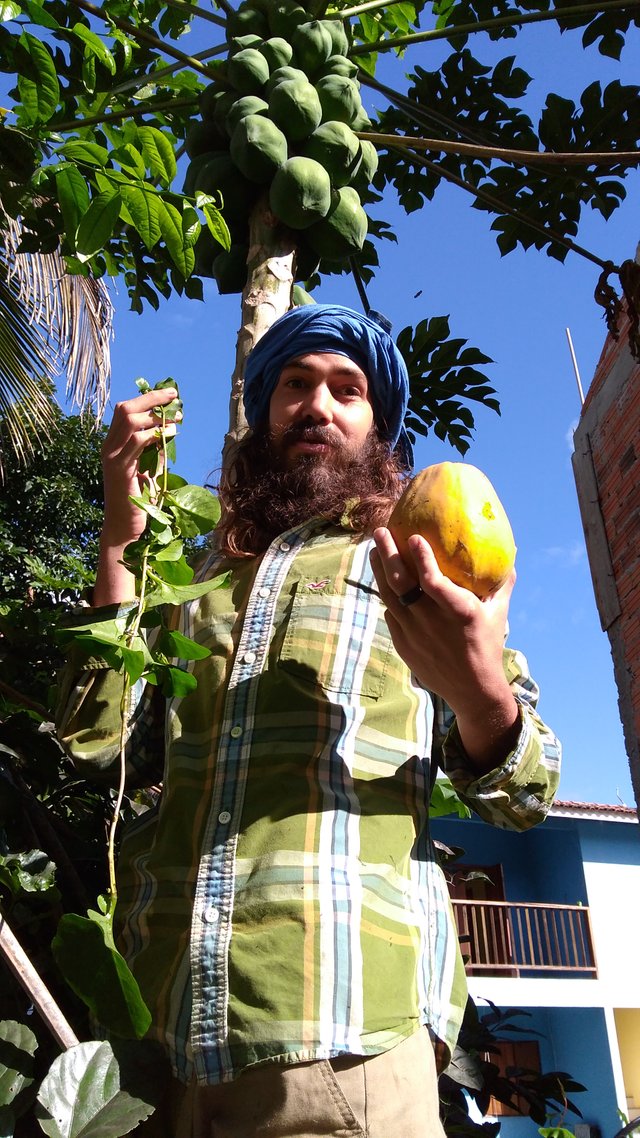

Bertalha-coração
Here is the bertalha-coração (in english: madeira vine), it’s leaves and aerial and underground tubers are edible and delicious. It’s a native to South America and is very much regarded as an invasive weed in many places. In many other countries where it has been introduced as an ornamental and/or food plant, it often escapes to the wild and as it climbs and scrambles over other species it may dominate the native vegetation. However, it’s extremely nutritious, containing a high amount of iron, zinc and calcium as well as various other nutrients (N, P, K, Mg, S, Na, Cu, Mn, B). The leaves can be eaten raw, or cooked in various forms, and the “little potatoes” are cooked and eaten also. It has a suave taste, very eatable.
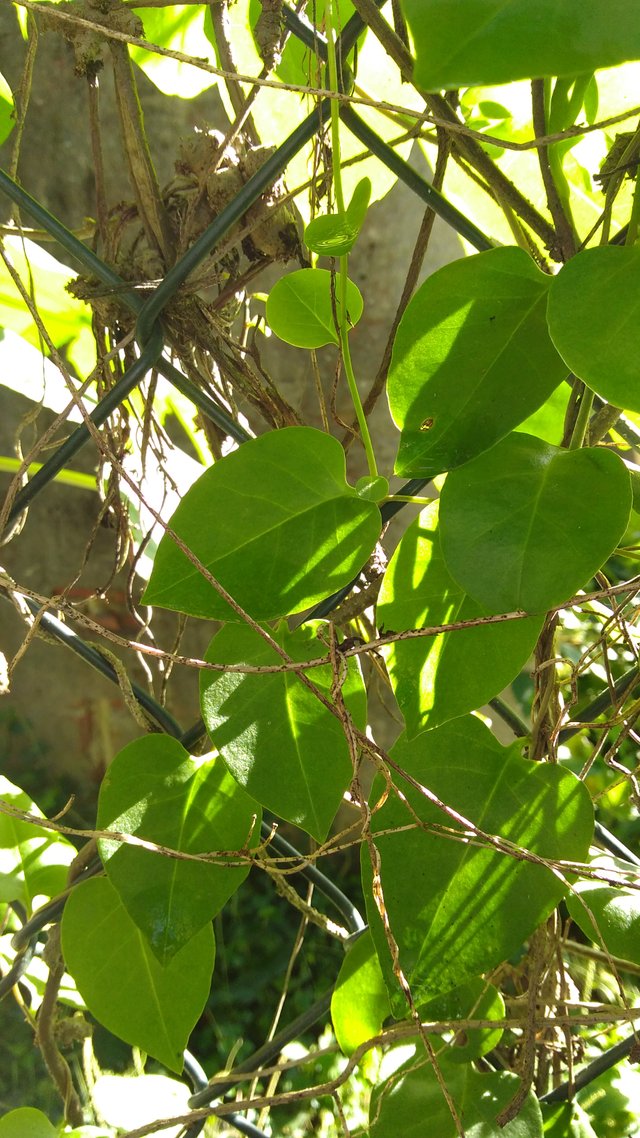
It scrambles and climbs over fences.
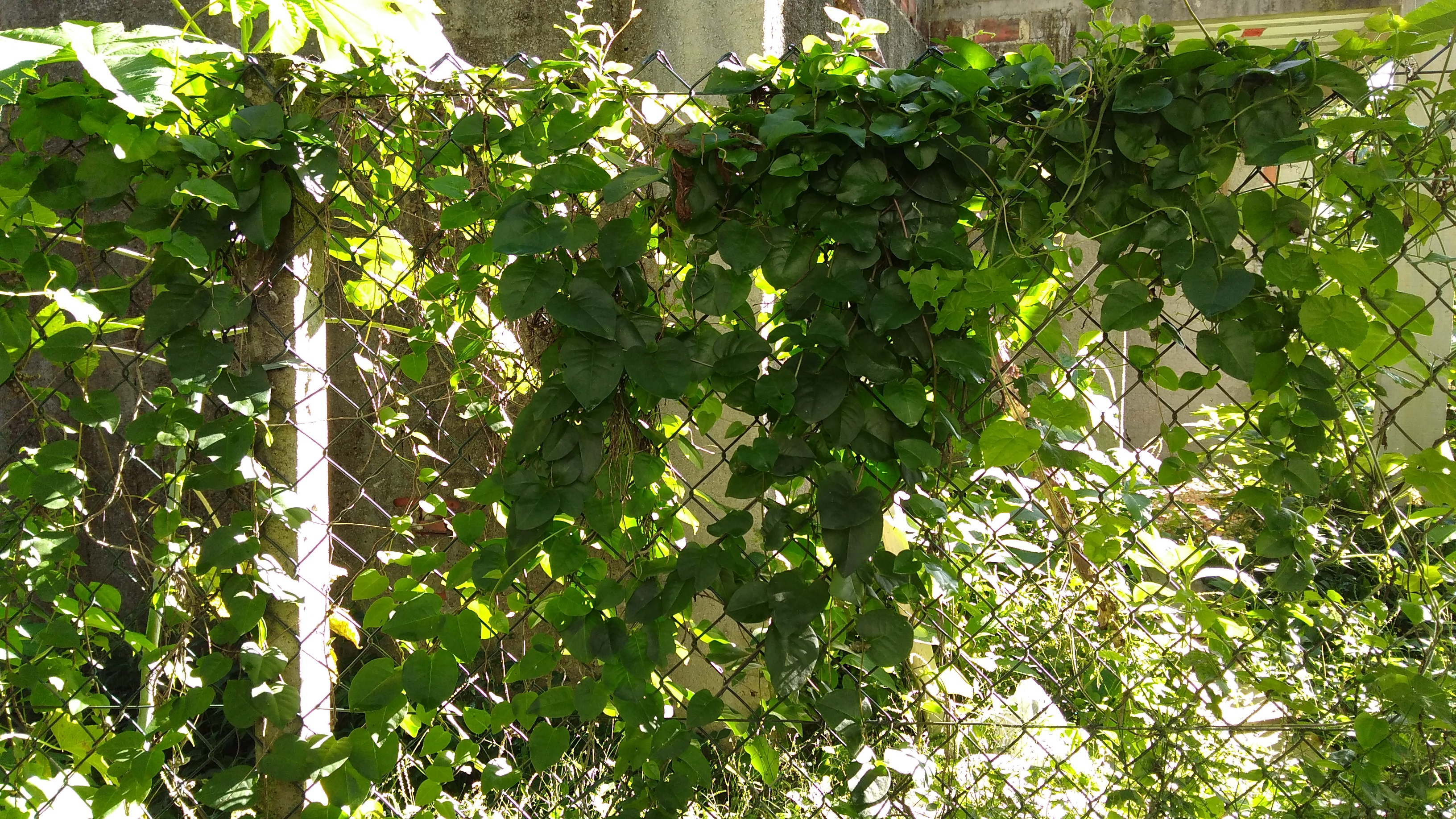
Peperômia
Peperômia or jabuti-caá (Scientific name: Piper pellucidum; English names include: greenhouse tea plant / pepper elder / rat ear), is a fairly low herb is a frequent “weed” growing abundantly in human spaces in the Atlantic forest. Can be eaten raw or cooked, and also prepared as medicinal tea (to treat cholesterol and high-blood pressure). It is a great source of potassium, calcium, iron, sodium, zinc and copper. It’s very tasty, a true functional food.
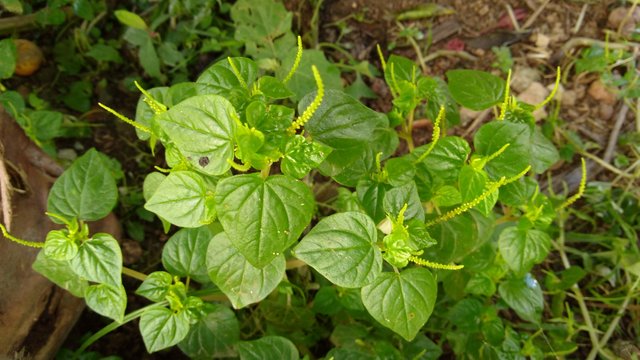
Capiçoba
This is my absolute favourite wild edible herb so far in Brazil! Very tasty!!!! Capiçoba (scientific name: Senecio hieraciifolius), an erect annual herb that grows to nearly a metre in height, it is a pioneer species in that it rapidly colonises freshy disturbed ground. You can eat the branch tips and leaves, they say you should cook it but I’m forever eating it in salads (official line: only eat in moderation until further lab work has been concluded). It’s aromatic with a very particular and delicious flavour. Apparently, there’s all sorts of folk medicinal use of this plant, however I’ve only ever just gobbled it up thinking how yummy it is (it’s one of the plants I’m gobbling in my profile pic).
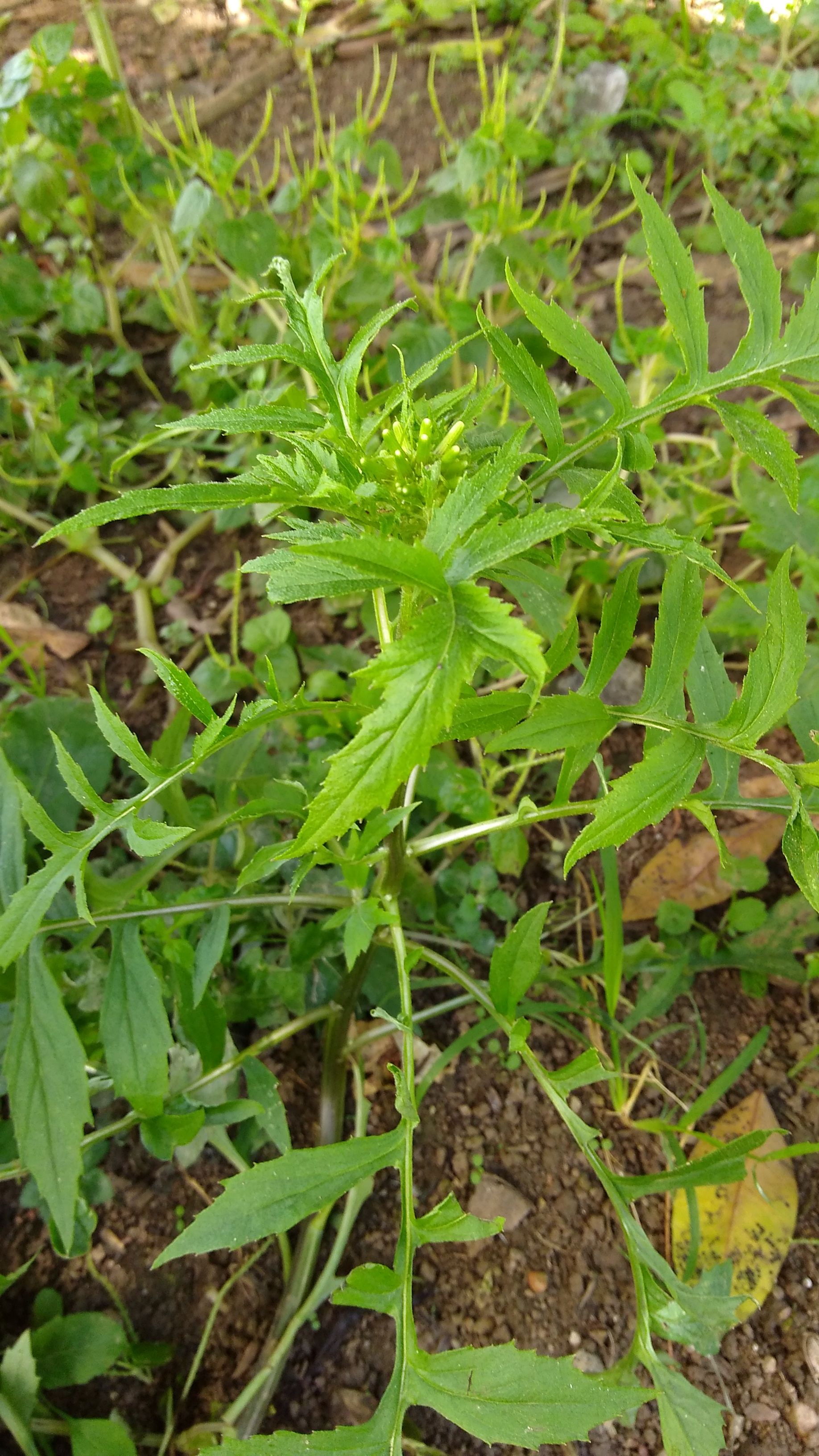
Major-gomes
Major-gomes (has MANY other common names; scientific name: Talinum paniculatum) is a much-loved favourite among the wild-foodies of Brazil. It is a hairless and somewhat mucilaginous annual herb that only gets to about half a metre at the most, as you can see it has quite distinct-looking simple leaves and it also have very attractive sprays of little pink flowers. Regarding the latter, a friend (‘Helena Amora Terra’ on Facebook) who studies the energetics of food theorises that due to these cheery little inflorescences that it should serve to lift the spirit when eaten (I love this stuff!). Another frequently abundant ‘weed’, this little beauty can be gobbled up raw or cooked. I always think it has a somewhat zingy lemony taste, very delicious. It’s a very hardy species so this is handy in times of drought as it will still persevere when all your faint-hearted lettuces have long since wilted and died. Nutritionally it is a power house for iron, magnesium, calcium, zinc and potassium. It also has 21.85% content of protein (in dry form) which is pretty handy for a veg. Unsurprisingly a lot of vegetarians have become fans of wild foods as important contributions to a well-rounded diet.
So I heard a nice story about how this plant got its name. Antônio Ernesto Gomes Carneiro (1846-1894) was a Brazilian army officer who fought in the in the Riograndense Federalist Revolution. Apparently on one of his campaigns (when he was a Major) he and his troops were stuck and starving to death. He recognised an abundant local herb as being an edible plant that his gran showed him when he was younger, and it ended up saving the battalion from starvation. It was named Major-gomes in his honour. I am trying to find a proper source for this story, I was told it whilst on a course, I think it's a pretty cool tale!
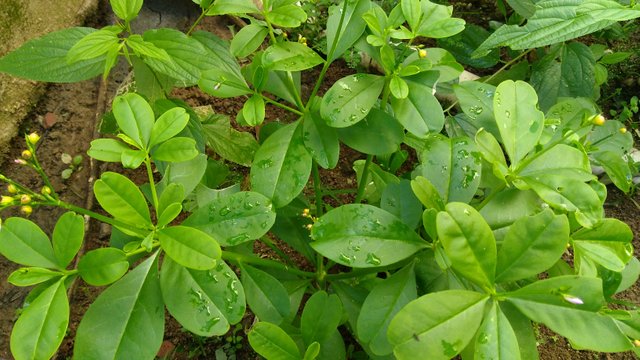
Taioba
Taioba (Xanthosoma taioba). A pretty popular veggie in Minas Gerais and Rio de Janeiro. These things can grow to be enormous! To be honest it warrants an entire blog spot all to itself, so I shall keep this brief! The leaves and rhizomes are both edible, but need to be cooked due to the presence of calcium oxalate (for this reason best to collect young leaves growing in the shade). There’s actually various varieties, including one which can be fatally toxic, eek! So people get themselves in a tizz trying to remember the various key identification features that differentiate the edible and non-edible forms (I shall not compromise myself here with any such hints and tips – do your research before picking this yourself!). The rhizomes offer a calorific punch which differentiates this as an important food plant. The leaves also offer a lot of calcium, magnesium, manganese, potassium, iron, sodium, potassium, copper, zinc and vitamin C. It’s also a good source of alpha carotene, beta carotene, lutein and violaxanthin. It follows people around like a bad smell, sometimes being planted, but very often simply appearing in fields and gardens of its own accord.
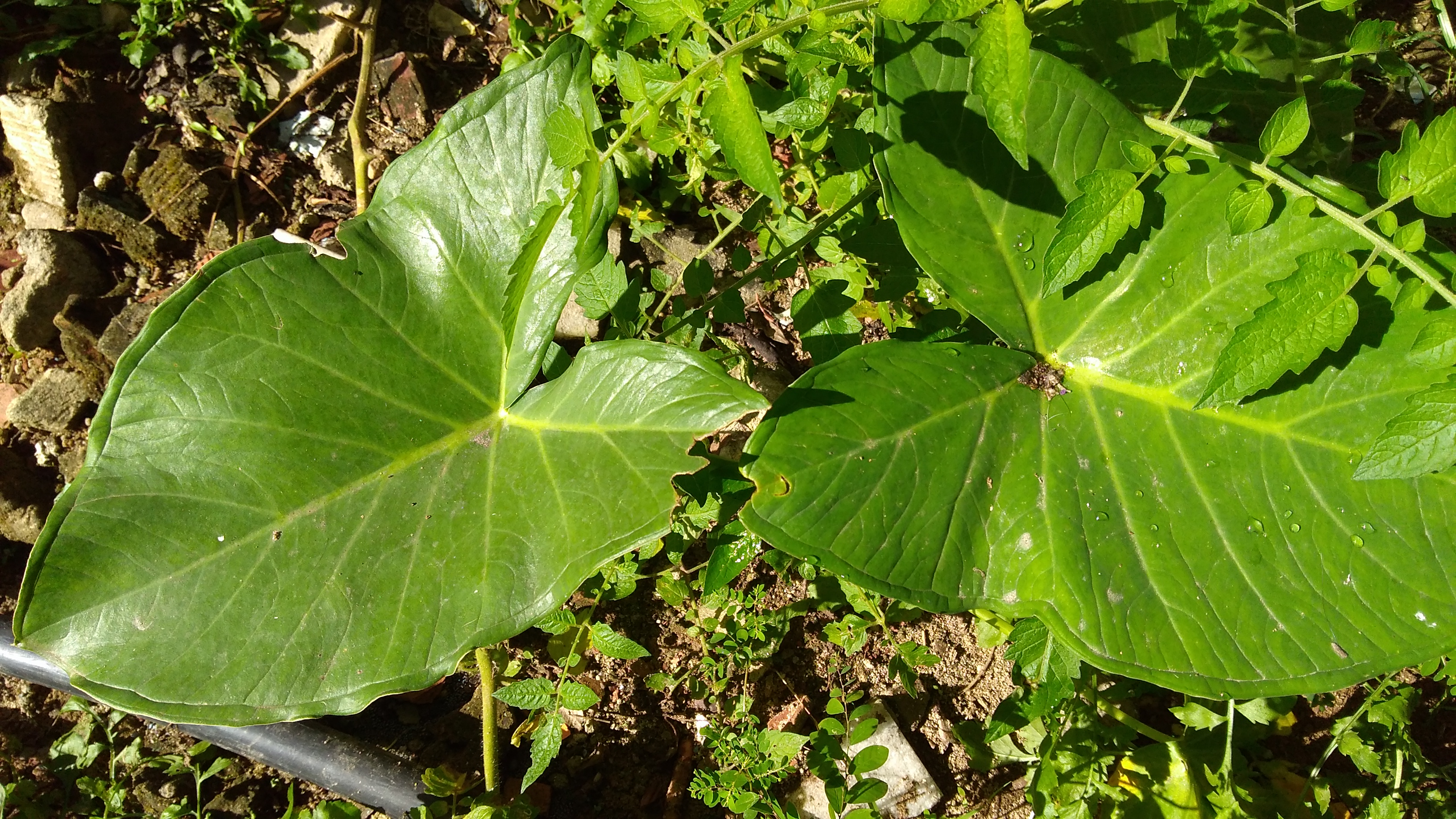
**Caruru-de-espinho **
Caruru-de-espinho / carurur caiçara (Amaranthus spinosus) is another erect annual herb, often forming quite significant bushes on disturbed grouds (the vacant lots in the neighbourood here are full of it). Best when picked young because later on it grows stout thorns that show no mercy (however not impossible to get around with some care and a pair of scissors). A good source of vegetal protein, iron, calcium, magnesium (among others). I love this herb! I always eat it simply cooked like spinach, usually when the cupboards have gone empty and I’m too lazy to go to the shops (true story!! he he).
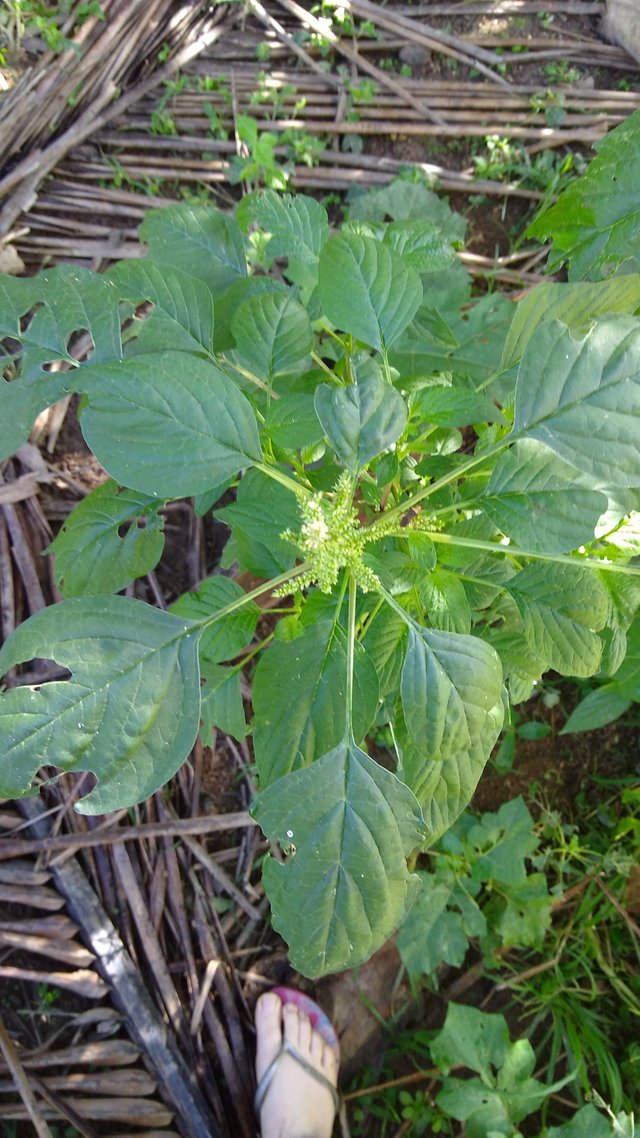
Almeirao-roxo
Almeirao-roxo (scientific name: Lactuca canadensis; english names include: horse-weed, wild lettuce). Grown in home gardens all over Brazil, this wee plant actually gets sold in supermarkets sometimes as well (a true sign of ‘reach’ in this day and age!). Think a slightly bitter lettuce, hardy as f@*! It’s a bit like the taioba in that it seems to pop up of its own accord almost more than it gets planted on purpose and can look a good drought in the eye without blinking. It’s very tasty and versatile in the kitchen, it can be eaten raw or also cooked like a spinach.
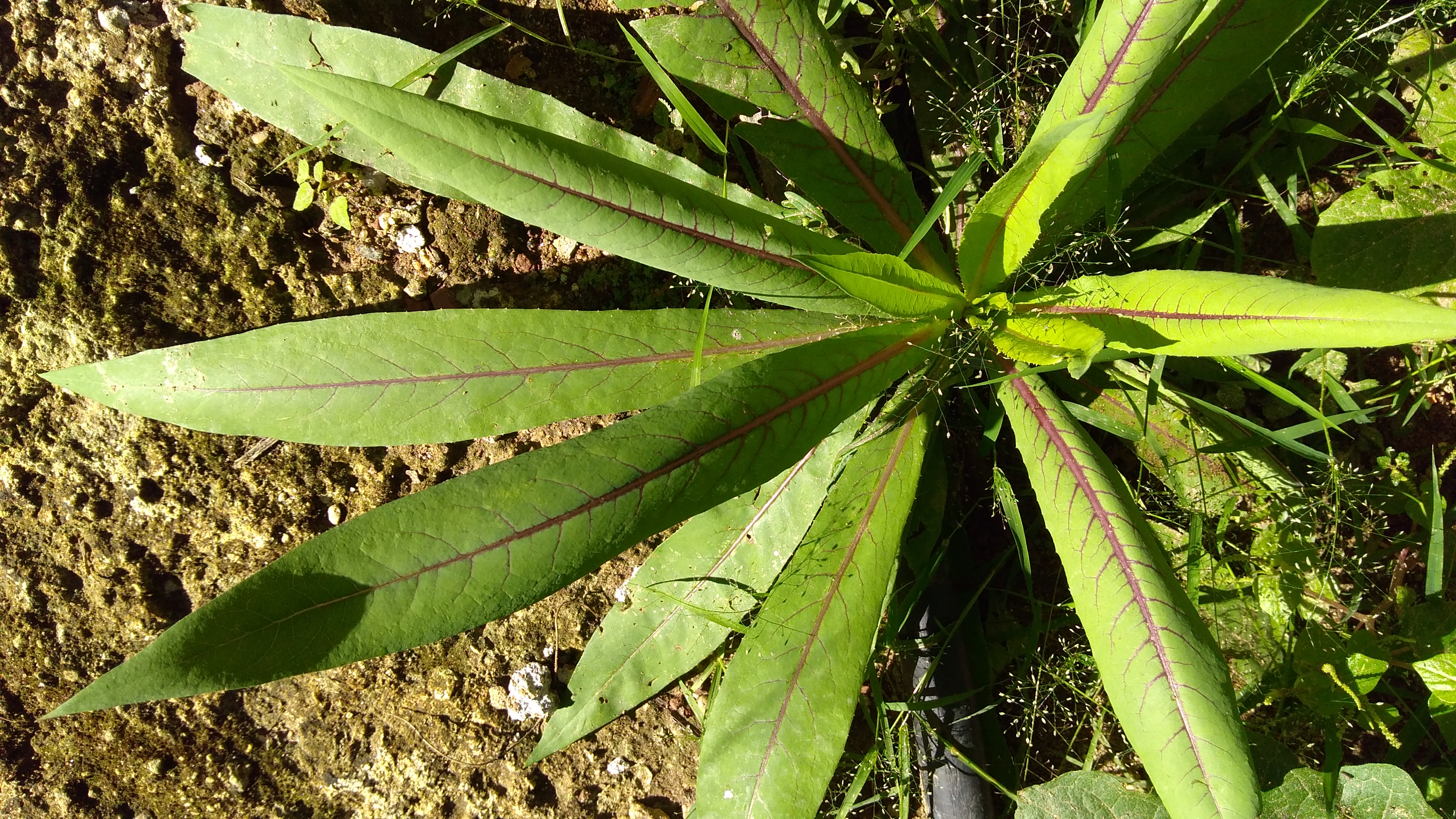
Cidreira de arbusto
Cidreira de arbusto (Lippia alba). Always ends up in my tea, especially around the time of my period, it has somatic, sedative, antidepressant, and analgesic properties. Very aromatic and soothing.
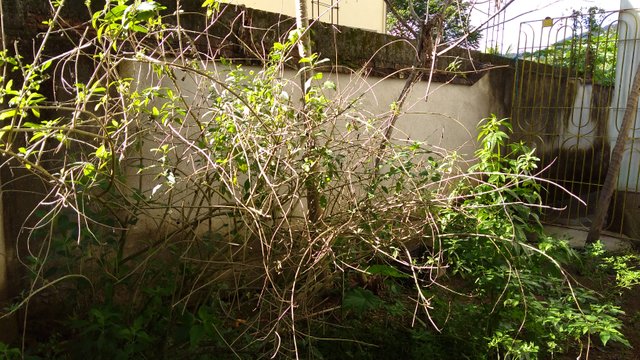
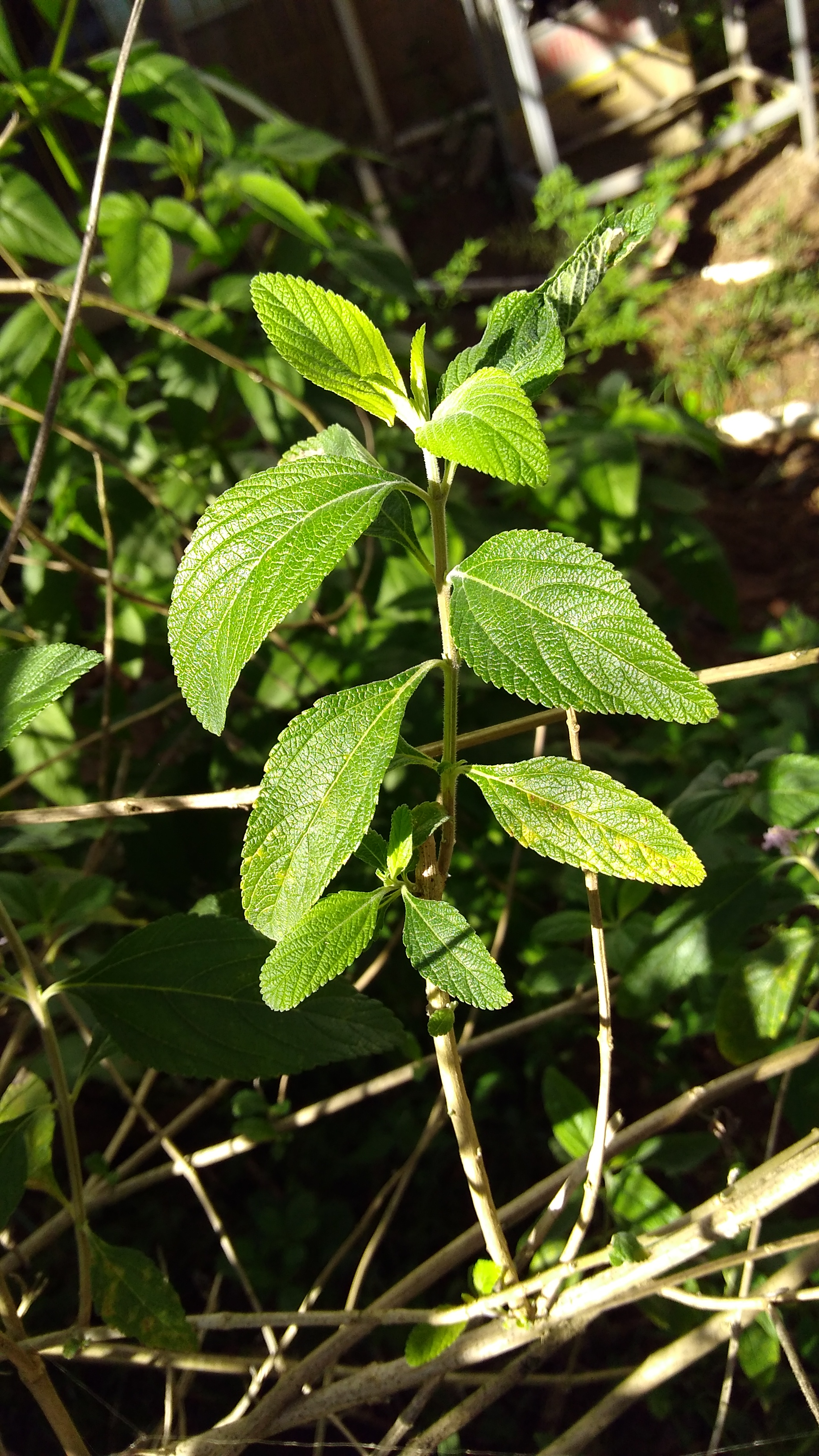
Limão-cravo
A ‘foot’ of rangpur (um pé de limão-cravo; scientific name: Citrus × limonia). These crazy lemons are more like oranges in comparison to the tart sicilian lemons that I’m used to back in Europe. The season has just passed but I managed to get a photo of one lemon just clinging on.
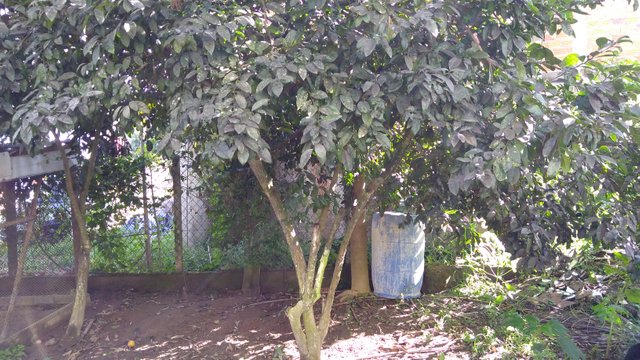
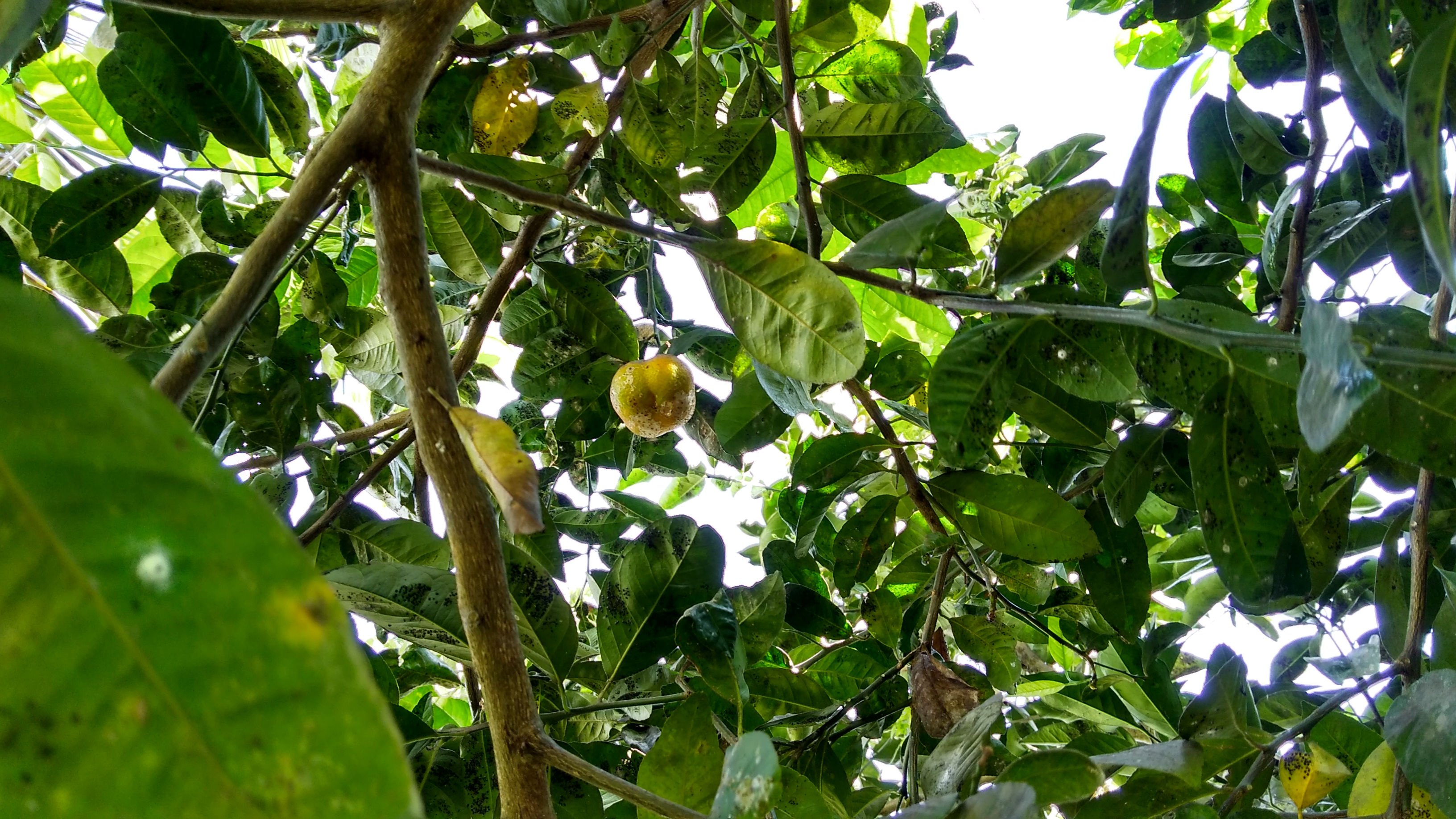
Coconut
And a coconut! (I don’t think it needs any special introduction).
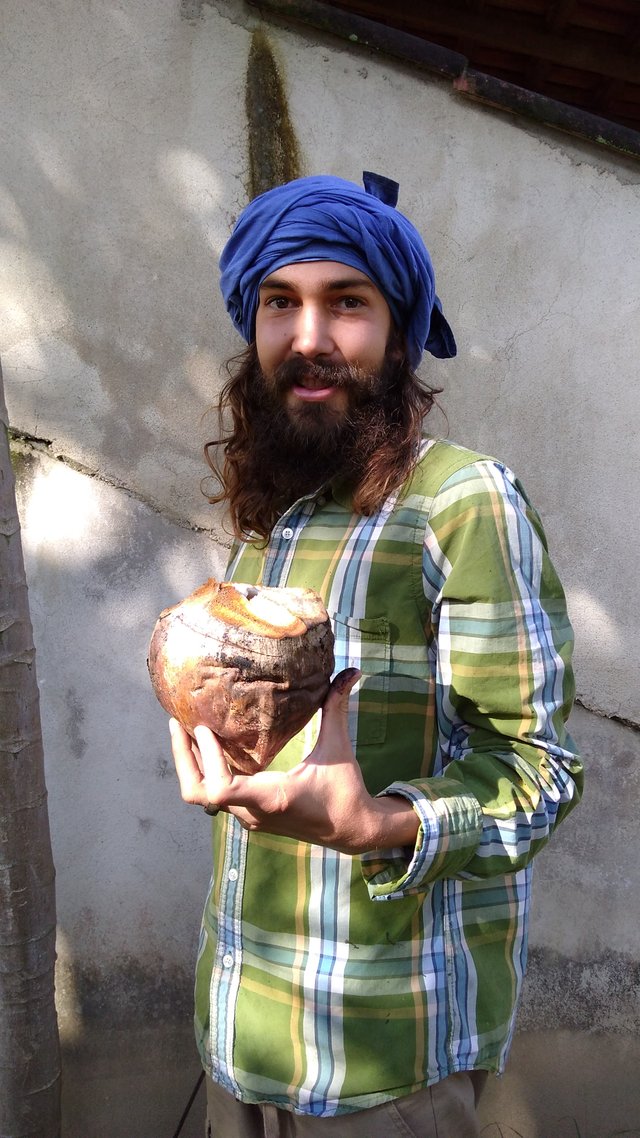
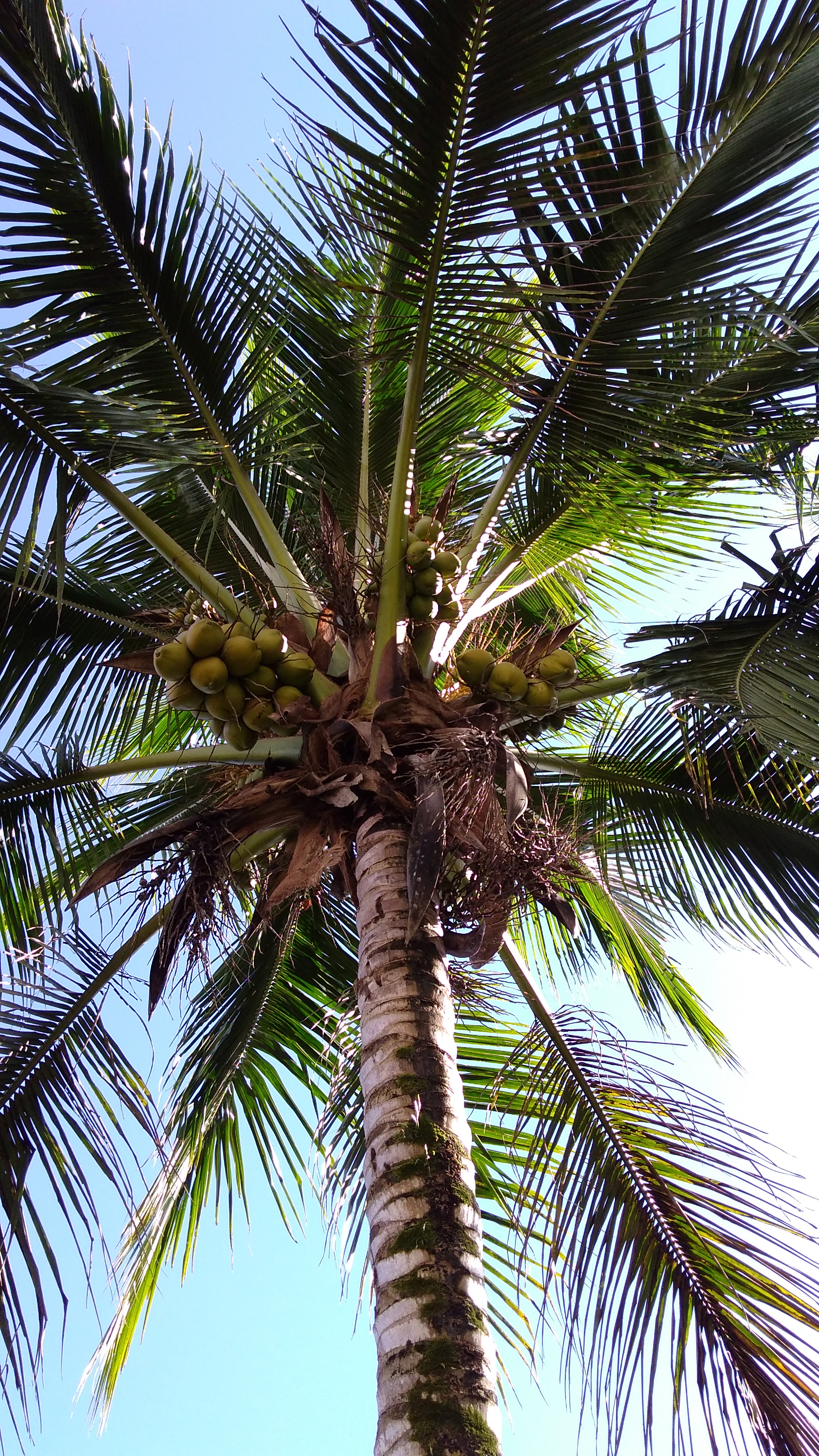
Melão-de-são-caetano
And last but not in any way least, we have Melão-de-são-caetano (scientific name: Momordica charantia; English name: bitter melon). The leaves and funky little warty fruit are traditionally eaten in many Asiatic countries, I’m still trying to figure out the nuances of preparation as food. I have however been drinking away at its tea as it is highly medicinal and acclaimed for use in treating diabetes, skin problems, insect bites, constipation, generally an all-organism clean-out detoxification and maybe even has potential in treating cancer. Please do your own research regarding possible side-effects before consuming as it is a medicinal power-house, always treat such plants with respect.
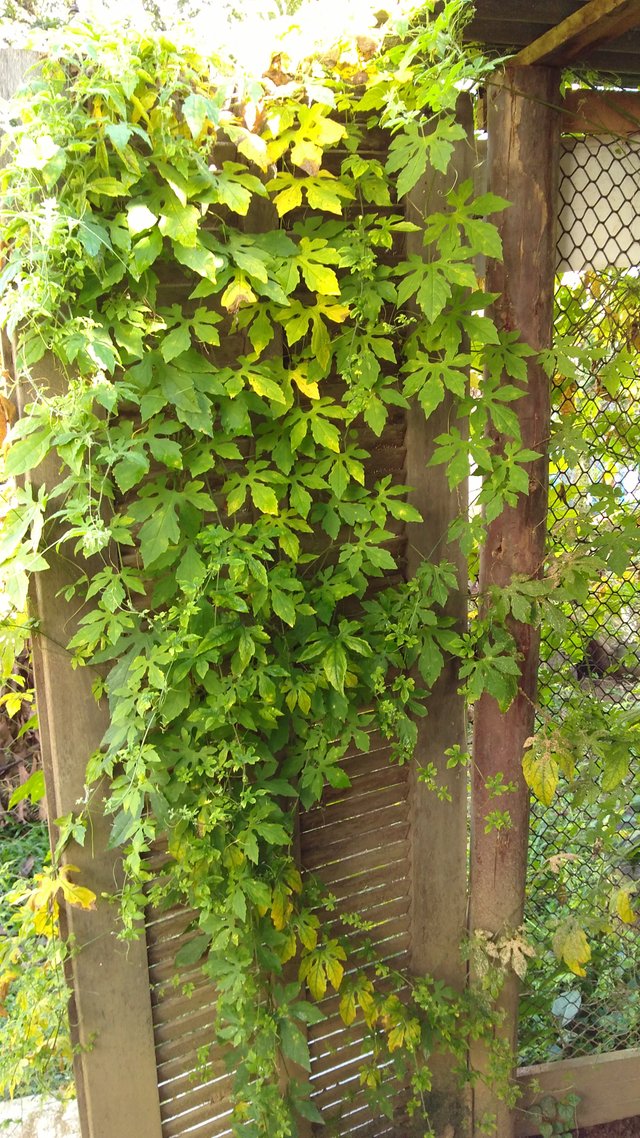

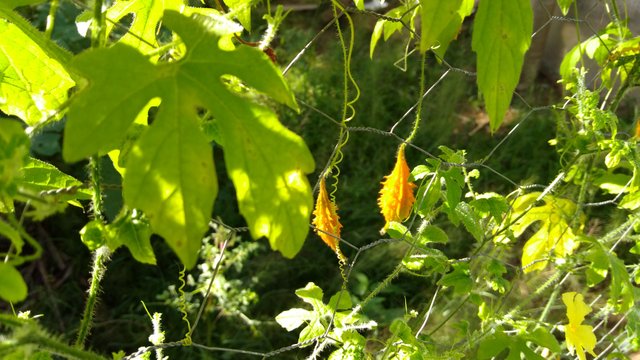
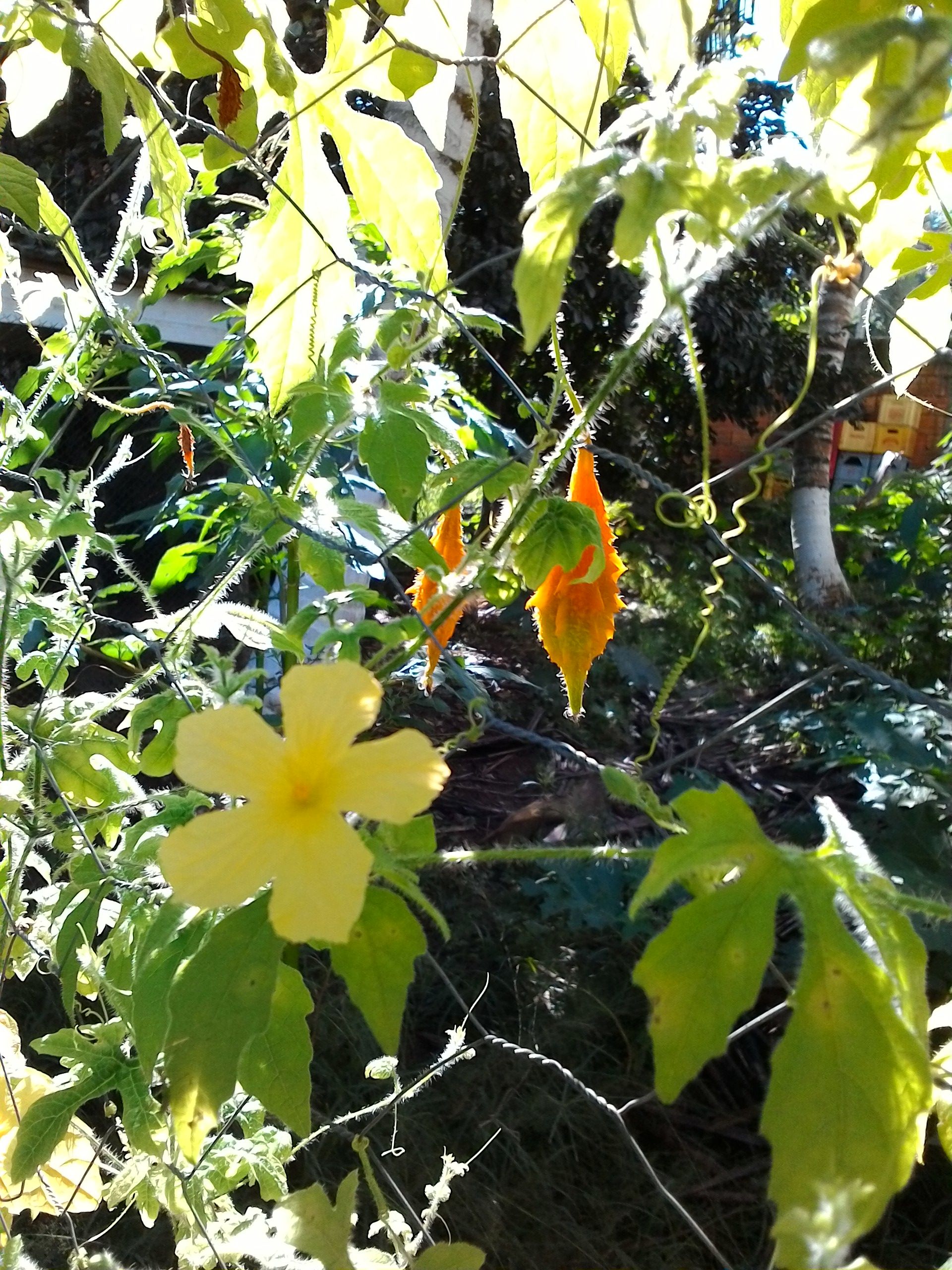
And that’s it, the back-yard hasn’t run out plants, I’ve just run out of steem to keep on writing!!! I didn’t even get to tell you about the jurubeba, wild tomatoes, urtiga-mansa, pitanga or the jabuticaba. Ah well – maybe another time!
Back-yards: worlds of wonder
But I guess in brief, the point I’m trying to make is that back-yards are amazing places!! They are filled with plants that are useful to humans, and often highly nutritious or medicinal. Sometimes they’ll seem an anarchic mess, but oft times people will have been planting in all sorts of useful species in there through the years, and other wild species will be popping up shouting out for your attention. There’s an entire academic field within ethnobotany dedicated just to studying them. They always tell a story about human’s relationship to nature, you just need to know how to read it.
Peace out Steemonians!!! <3
Credits:
All the photos are my own.
Many thanks to João-Ricardo for modelling with the plants as he foraged his breakfast!
I referred to :
Kinupp, V.F. and Lorenzi, H. (2014). Non-Conventional Food Plants (PANC) of Brazil [Plantas Alimentícias Não Convencionais (PANC) No Brasil]. Nova Odessa, SP: Instituto Plantarum. (this is a keystone book - started a veritable movement regarding wild food plants in Brazil!)
AND
http://www.plantasquecuram.com.br
Maybe your neighbors in the country to the north need to do some of this, since there is no food there.
There's quite a few countries to the north of Brazil... Maybe I'm being a bit slow but shod it be obvious what you mean?
Thanks i love your post it is very completle
Some of plants we saw but we do not know the
Special properties that it has specially vitamins.
In my parents land Lippia alba is used for give tasted to our
Soups. And for medicine like for hit, when you are hurt by a hit
You boil water with the plant and put the hot water boiled with the plant in
The parts of your body hurt and it would make you feel better.
And in case of Amaranthus spinosus in our country it is considered a
Bad plants because it appears in every parts and compete with the
Corn harvest and with every harvest.
Every people consider a bad plant
When i found it again i will make a delicious soup, people do not know that plant is good for the soil.
Ahhhhhhhhhh i forget the most interesting plant that you explain
THE COCONUT, tomorrow i will drink one by yours thanks for that
Beautiful and interested information.
Yes, that's a good point about the plants being good for the soil - a lot of wild plants have very deep roots and bring up nutrients from below to the top layers where it is accessible to crops.
What is your country? Thanks for sharing your experience with these plants!
Thanks our country is El Salvador Central America
Nice information.
I forgot to say that this is in Paraty, in the State of Rio de Janeiro.
Hi @kate-m and thank you for a really good post and pictures. Im from Spain and i like permaculture and nature in general, my english is not good writing but thank you so much for good work in steemit and in the life whit that kind of studies. (feel free to correct me :-)
My correction: Hi Kate, thanks for a great post and pictures. I’m from Spain and I like permaculture and nature in general. My written English isn’t great but just wanted to thank you for the good work in Steemit and in life with the kind of studies that you’re doing.
Ha ha, thanks for the vote of confidence! I really want to travel to visit permaculture projects in Spain and Portugal after I finish my PhD, I think it's a great part of the world!
Thank you so much for the lesson imao, if you come to Spain you can visit us in Málaga, we have a permaculture proyect ecoluciona.com if you want to see. I want to go to Brazil same day.
How cool! I just saw your courses Aplicada Bosques comestibles, and bano seco, he he, I'm almost as obsessed about dry toilets as I am about van-life.I'm going back to Europe in September but there's loads of permaculture projects here in Brazil. There's alway people travelling through here with WorkAway who seem to hop from project to project.
That's quite a tour of wild edible plants in your local area -- super local! It shows that food may be all around us, if we just look at the plants a little closer. Happy foraging!
That's a lot of good eating in just a little space! Your post really highlights how many easy-care food plants we could have around us. It's interesting seeing some of the same plants, or their near relatives, growing so far from where I live, like the Lactuca and Amaranthus.
And I definitely appreciate the work of the ethnobotanists. It takes some digging, but they can really help dispel some of the misinformation on the Internet! It would have been nice for some of the old ethnobotanists to talk more about how plants were prepared, rather than just documenting that the plant exists. Of course, that's easy to say -- and much harder for them to do it!
Thanks for your thoughts from Brazil!
Yes, often wild and semi-domesticated plants are very well adapted to their environments, and yet everyone persists in trying to grow delicate plants that evolved and were bred in other continents. Here in Brazil the supermarkets are full of varieties from Europe and elsewhere. It's amazing how the colonial past is still reflected in today's food habits. Many in the wild food movement (PANC: non-conventional food plants) see the consumption of native plants as being a form of decolonisation and resistance against imperialism.
Old skool ethnobotanists are a charming breed :) I have a friend here who is going to do a masters project on traditional regional recipes usings PANCs. I'll tell her to post her stuff on here when she's done. I'll also post some photos when I get time!
I can appreciate the immense productivity, ease of harvest and processing, the ability to time harvests on the calendar, and sturdiness for going to market, for a lot of cultivated crops. But there is so much other food. People often ask what they should grow in a first garden. Many well-known gardeners say to grow what you like to eat. I say grow what does well in your area, that's almost a weed, and learn to enjoy eating that!
Not having good, simple recipes is a big barrier for a lot of folks when it comes to new foods. So your friend will be doing really helpful work. That's one thing I like about Steemit -- there are people from all over the world and many are still using traditional knowledge in their foraging, especially Asia and eastern Europe. I'd really like to see more from the Americas!
If you ever run across examples of traditional recipes using Magnolia or Peony flowers (even though they aren't from your region), I've been looking for awhile and can only come up with a few things, like pickled petals and jelly.
💫 Hey @kate-m 🌿 Thank you for sharing your backyard wisdom. A friend of mine did ethnobotanical research in 20 home gardens in 4 villages in Calakmul (Campeche, Mexico) - you can find her work here: https://zidapps.boku.ac.at/abstracts/oe_list.php?paID=3&paSID=7377&paSF=-1&paCF=0&paLIST=0&language_id=DE
This is in German though, but maybe she has a translation. I may ask her if you are interested 🦋
I myself did permaculture for a year - I mean preparing a land for permaculture - in India and learnt so many things from nature. It is truly a grounding and heart opening work to do.
Thanks for your very informative and warmly post.
Wow, great and good work with amazing pictures. But I don't see the pictures # 18-22 ?!?
Hmmmm, I don't know why, they appear for me. Thanks!
Congratulations @kate-m! You have completed some achievement on Steemit and have been rewarded with new badge(s) :
Click on any badge to view your own Board of Honnor on SteemitBoard.
For more information about SteemitBoard, click here
If you no longer want to receive notifications, reply to this comment with the word
STOPBy upvoting this notification, you can help all Steemit users. Learn how here!